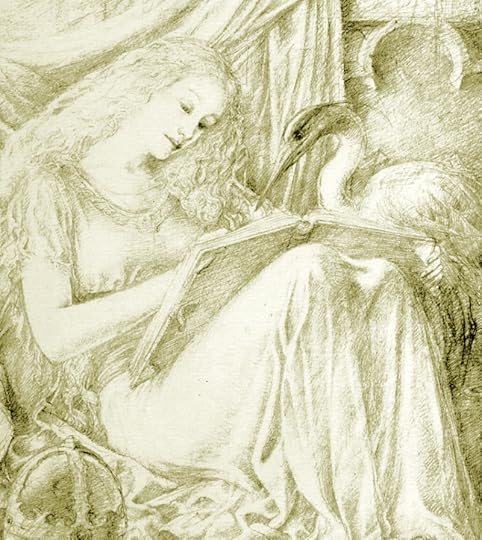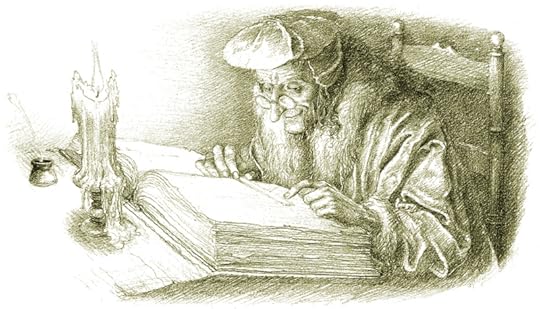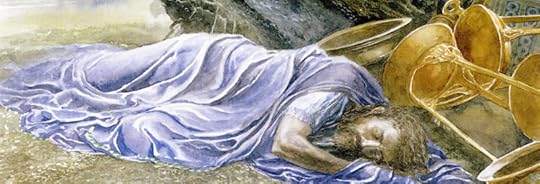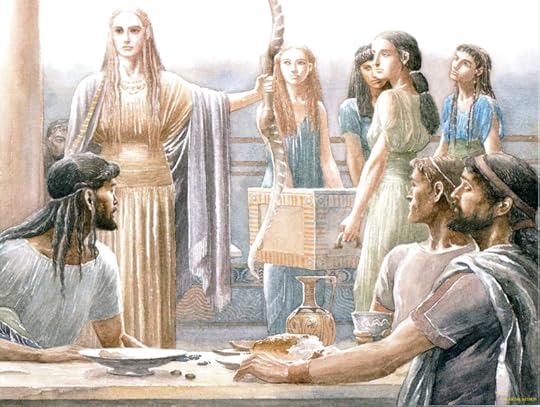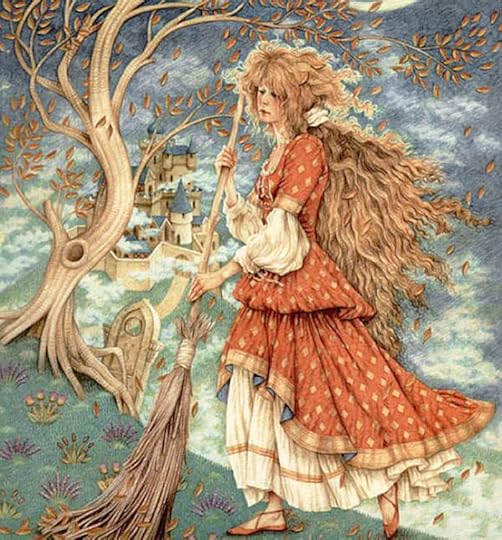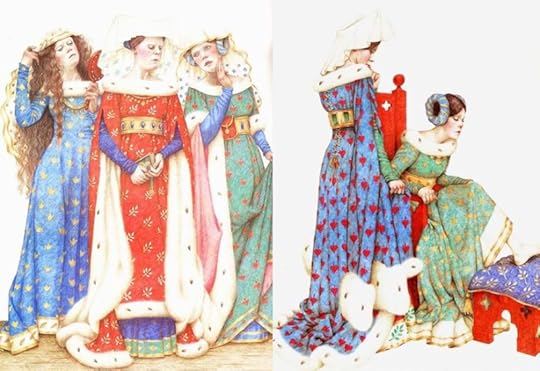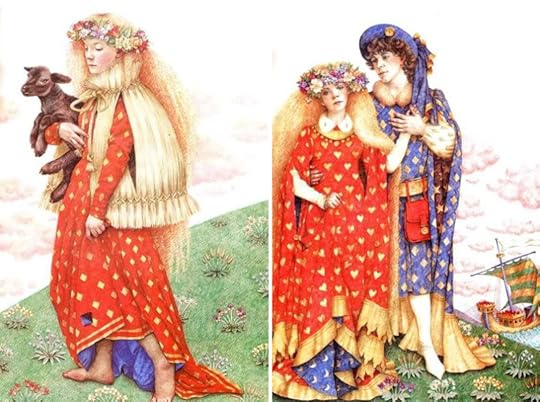Reading, telling, awakening
From The Mystery Feast by Ben Okri:
"How do we awaken the imagination? One of the ways, passed down to us with cunning simplicity by our ancestors, is storytelling. But it takes many forms. A painting on a cave wall of a man pursuing a bison is a story. The frescoes of Giotta in Assisi are distilled stories. Stories are interactions between mortality and immortality. When we tell stories some immortal part of ourselves is singing in time. When we tell stories the ages awaken. When we listen to stories our future takes clearer shape. That is because fear comes from unknowing, and stories help us know a little more. The things that the heart knows shine a greater light than the things the head knows.
"Take the story of The Odyssey, and the twenty-year adventure of trying to get home. It tells us a hundred things, and each moment of the story tells us a hundred more. Why did Odysseus answer 'Nobody' when Polyphemus asked him his name? On one level it is a cunning ruse. On another interpretative level it hints perhaps that we are someone specific and no one. In being no one he could be everybody.
"What does the story of Penelope mean? Every night she undoes the weaving she did during the day. On one level it is a cunning act of delay, worthy of the wife of Odysseus. On another interpretative level we sense that this is what life does, what sleep does every night, what death does at the end of life.
"Take the story of Cinderella. She is the one who is ignored, who does the hard work of cleaning, while the two elder sisters get to go to the ball. Yet it is her foot that the slipper fits. On one level this is a tale of wish fulfillment. On another level it could be seen as a hint of the rewards of humility. It could also be seen as a parable about those who might inherit the earth, that it is not the showy ones, the evidently beautiful ones, or the famous ones that the true riches of the kingdom come to, but perhaps those who toil unseen.
"Have you noticed that when someone does something astounding, publishes an important new novel, makes an invaluable scientific discovery, or creates an amazing new work of art, the press always says, 'they came from nowhere'? They didn't come from nowhere. They came from where Cinderella came from, toiling in the unglamorous back rooms of their chosen field, wherever life has led them."
Simplistic modern versions of Cinderella, focused on rags-to-riches wish fulfillment, miss the point of the story says Okri, the "acres of its possible interpretations."
It's because of the hero's "goodness of spirit, her kindliness, her toughness, her quiet initiative, because of all these things and more, which the tale only hints at, that Cinderella is the most deserving of the sisters. She earns her glory by her toil and her spirit, and not by the appropriate size of her feet. In this story her feet are merely the symbol of having walked the right path."
For more on the history of the Cinderella tale, see "Ashes, Blood, & the Slipper of Glass."

Pictures: A detail from "The Sorceress," "Merlin," "Odysseus," and "Penelope and the Suitors" by Alan Lee; plus five Cinderella illustrations by Yvonne Gilbert. Words: The passage above is from The Mystery Feast: Thoughts on Storytelling by Ben Okri (Clairview Books, 2015). All rifhts reserved by the artists and author.
Terri Windling's Blog
- Terri Windling's profile
- 708 followers


